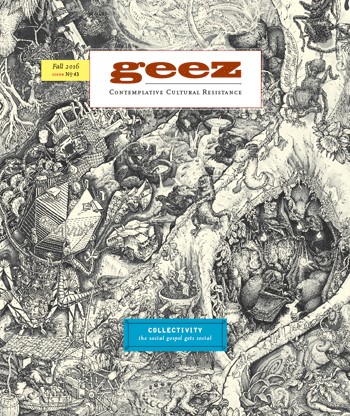The Pleasures and Sorrows of a Teenage Katimaviktim
At age 21, I took a chance and signed up for Katimavik, a Canadian volunteer program founded in 1977 that put me in a group with a dozen youth between the ages of 17 and 21, and sent us into three communities for three months apiece. I thought a program, whose name literally meant “meeting place” in Inuktituk, was my best bet for learning to get along with strangers.
In the program, each member of our group had a nine-to-five volunteer job in the community, and when the workday was done, we would come home and participate in activities designed to coalesce our group into a unit.
There were mixed results.
At times, it felt like a grand adventure; travelling to locations we’d never been, working to improve communities, and organizing group hang-outs and trips, it was like the best parts of high school. Then, of course, there was the infighting, the personality clashes, people getting sent home for breaking rules and infringing on boundaries. Again, a lot like high school.
But it was both the good and the bad that made our collective so powerful. We continually worked out our differences as a group, knowing we were stuck together for the better part of a year. This proved important, as we processed some of the difficult things our volunteering forced us to confront together, like the amount of food thrown away at a food reclamation facility in Manitoba, or the stark realities of children we worked with as teacher’s aides in Labrador. These were a shock for many of us, and we were thankful to have fellow “Katimaviktims” to commiserate with.
The power of Katimavik came from the gradual strengthening of relationships that comes with time. One moment that stands out came early on, when many in the group were dealing with feelings of isolation, homesickness, and depression. The fact that we wouldn’t be spending special moments like birthdays and Christmas with our families hit us hard, especially one boy who celebrated his 18th birthday within the first month of the program. He was surrounded by strangers, far from friends and family, and in an unfamiliar city to boot, and we all empathized with how he felt.
Despite not really knowing each other, our whole group decided that we should plan a birthday outing for him like no other. Pooling our meagre resources (though food and lodging were paid for, volunteers received an honorarium of $3 a day to spend), we organized a birthday outing with drinks and dances for the whole night, and made him (and us) feel like we were part of a group that cared. To this day, I remember that night, when the easing of tension between strangers allowed us all to start to become friends.
This act of coming together and doing something for a relative stranger was the first indication of how we would band together in the coming months. When people left the project, dealt with family troubles from afar, and even lost loved ones, our group was there for each other.
Though the program lost its funding in 2012, there are hopes it will be reinstated under the Liberal government in 2016. If it is, I will be one of the more than 30,000 alumni who will be celebrating its return, knowing that it will help create a generation of community-minded citizens that will continue to make Canada a collective worth caring for.
Of Albertan and Québécois heritage, Andrew Guilbert is an assistant editor with Avenue Magazine in Calgary. He writing has appeared in Alberta Views, The Globe and Mail, Maisonneuve, Quill & Quire, and Canadian Dimension. Every time he donates blood, it makes him feel like community is more than just a buzzword.



Sorry, comments are closed.